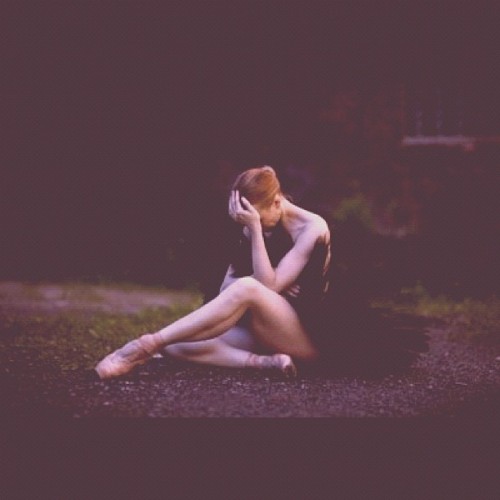
By Rachel Rist
Science is now proving what generations of dance teachers have known instinctively: When the pressure hits, if you dance too much and aren’t able to let your body recover, trouble will ensue. Even in active individuals, overexertion can overload the mechanisms of adaptation, leading to feelings of constant fatigue and muscular weakness, increasingly frequent injuries and, inevitably, a negative impact on the ability to perform. In this condition, known as “burnout,” there is diminished physical performance for no apparent medical or other obvious reason.
Although anyone can suffer from burnout, athletes and dancers are particularly vulnerable. In preparing for a performance, for instance, there is usually a marked increase in physical activity. Given sufficient time, the body adapts very well. But sometimes, either with unusual choreography, a new director or teacher, or an increase in the sheer amount of rehearsal time needed, the body simply cannot cope with the new demands. Burnout can also be brought on as a result of a few days or weeks of fatigue or by long-term exhaustion, and is often triggered by psychological stress. It has been defined as a “physical, emotional and mental overload.”
You may know someone who has been “burnt out,” but what does that mean and how do you recognize the symptoms? For dance teachers in particular, it’s important to be aware of the warning signs and take appropriate action, for yourself and your students.
Factors Contributing to Burnout
Burnout is a complex condition with a range of symptoms and signs that vary from person to person. It often occurs in dancers during periods of increased commitments, either in class or onstage, and in individuals whose daily regimens produce an imbalance between physical activity and rest. Dancers most likely to reach the stage of burnout are highly motivated overachievers who set high standards for themselves. They often forget that taking the time to let their bodies recover can actually lead to improvement in their dancing.
Although no studies on the effect of burnout in children have been published yet, anecdotal evidence supports the notion that both health and physical performance may be affected if exercise is excessive during the tender pre-adolescent years. This isn’t a new idea; it was observed roughly 2,500 years ago by Aristotle, who wrote: “The disadvantages of excessive training in the early years are amply proved by the list of Olympic victors; only two or three of them won a prize both as boys and as men. The discipline to which they were subjected in childhood undermined their powers of endurance.” As adolescence is a period of rapid physical change, it’s particularly important that young students don’t overdo it.
External stressors such as family and personal relationships, issues at school or work and financial difficulties may further contribute to the development of this condition. Burnout can frequently be traced to a seemingly innocent personal event that becomes a trigger for more serious symptoms. Young professional dancers in their first year with a company are vulnerable, as they are often required to learn many roles as understudies, and are unable or unwilling to say no.
Fundamentally, the root of burnout in dance is that these artists are trained to cope with a workload without complaining, aware that there are others who would happily take their places. The rigorous self-discipline that trains the mind to ignore pain signals can add to the problem. Also, because many dancers do not complete an academic education beyond the age of 18, they lack access to sound nutritional and health advice.
Symptoms and Signs
The signs of burnout are often evident, but too often ignored. If your dancers report disrupted sleep patterns, with vivid or stressful dreams and night sweats, take notice. When the body does not feel rested and the mind is disturbed, trivial events become major stressors and the sense of humor suffers. Small things, such as a missing personal item, can cause great irritation and dramatic outbursts. You may observe that someone approaching burnout may appear very negative, and lose appetite as well as interest in normal daily events.
The physical manifestation of symptoms affects daily class; there is a loss of technical ability, combined with occasional loss of stamina. Other physical symptoms might include elevated blood pressure and heart rate, excessive sweating and an inability to recover optimally following intensive dancing. Injuries become increasingly likely. It is often at this stage that dancers seek outside help. Sometimes an overuse injury can be a symptom of burnout, so teachers and medical teams should remain vigilant.
Acute and Chronic Burnout
Burnout can be acute or chronic in nature. Acute burnout, which lasts less than one month, often occurs at the commencement of a new season, as dancers have been expected to learn and perfect several different types of choreography to prepare for performance. At this point, there is a lot of contrasting repertory to master in a short span of time. This type of burnout often results in muscle damage (and, therefore, muscle pain and stiffness), a common indicator that the work volume has exceeded a dancer’s capabilities. However, the effects of acute burnout quickly disappear when its causes are no longer present.
Chronic burnout is the result of accumulated imbalances between exercise and recovery over a period of weeks or months. When the condition is fully developed, additional signs (to those mentioned already) may appear, including menstrual irregularities or cessation of menstruation; increased allergies; longer healing time for even minor scratches; and susceptibility to infections, especially of the upper respiratory system.
There is no universal agreement as to why increased physical exercise seems to be linked to the reported incidence of infections in athletes. Some researchers suggest that the susceptibility to infections following periods of intensive exercise training may be due to lower plasma glutamine levels. Glutamine is responsible for the biosynthesis of the rapidly dividing cells of the immune system and for the provision of a substantial part of the energy required by this system. Commercially available glutamine supplements (sold at most pharmacies) may help combat chronic burnout.
Prevention and Treatment of Burnout
Can burnout be avoided? In simple terms, yes—with a change of culture and attitudes. Rehearsals should be scheduled so that dancers can recover between sessions and have time to absorb new movement into their bodies; tours should include rest days; choreographers need to plan the best use of the dancers’ time and try to use video feedback instead of more rehearsals; companies and schools must provide access to counselors; and dancers need to reexamine their lifestyles.
Dancers who supplement their training with a well-rounded fitness regimen can fortify the immune system and provide release for mental stress. Proper nutrition and good hydration are vital in maintaining good fuel for the body. Sufficient rest and sleep are also important and can be achieved with relaxation tapes or a massage before bed. It’s also necessary to have a support system outside the intense world of dance. Finally, the concept “no pain, no gain” should be played down, as there is little gain to be made by working through fatigue, illness or injury.
Once a case of burnout has been diagnosed and dealt with, there is danger of relapse at around three months. To avoid this, it is advisable that a reduced or controlled amount of dance-related stresses (classes, rehearsals, etc.) be maintained for up to four months. Dancers should never attempt to suddenly increase physical loads more than five percent per week.
Burnout is a debilitating syndrome in which performance and well-being can be affected for months. It can be exacerbated by feelings of helplessness in a work situation or by a teacher or director who is less than sympathetic. The dance community must recognize that burnout happens and that anyone can be vulnerable, including teachers and choreographers, who face the daily challenge of maintaining a heavy workload. Providing advice and guidelines on exercise loads, recovery times, nutrition or pharmacological intervention can help prevent the development of burnout in dance professionals of all levels.
Rachel Rist, MA, is president of the International Association for Dance Medicine & Science.

























